Hello all and welcome to another installment of my near-potentially infinite series, Shattered Perceptions. This week I am looking to return to form and search for some hidden gems of Commander through the lens of general of the week, this week being a special brew of The Mimeoplasm. I had to a little bit of a journey before I could land on my favorite Ooze as the subject of this week’s article, so that’s the best place to start.
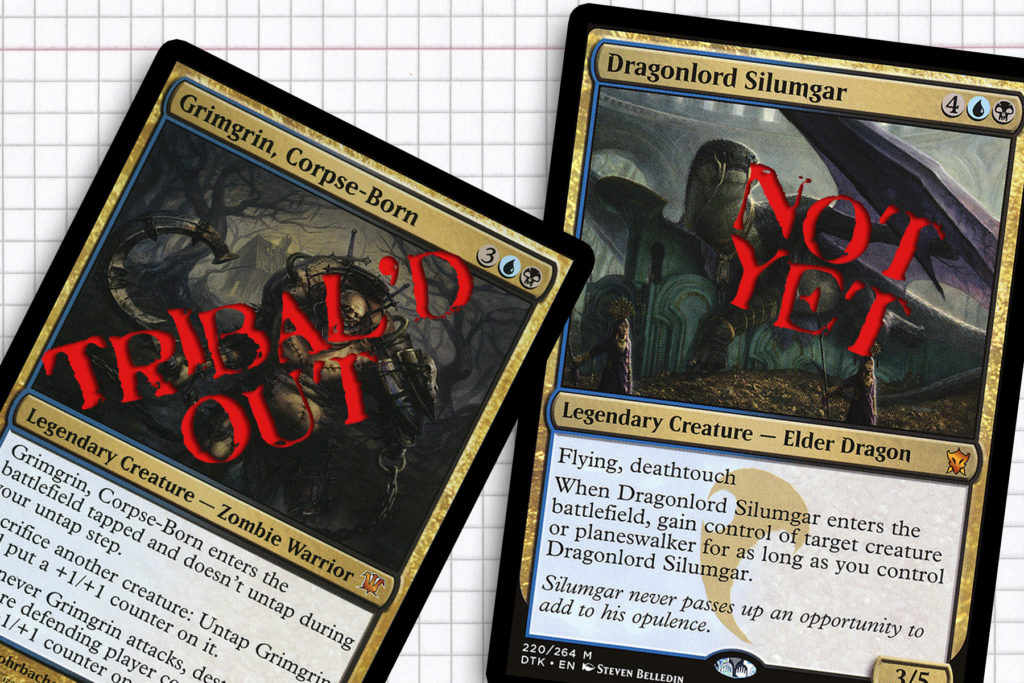
Mill Not Welcome
The origins of my build of The Mimeoplasm started early this week as I set out to cover a general that was Blue/Black, but wasn’t in the mill archetype. Mentally, this challenge was difficult at first—it might have been screaming child in my lap breaking my train of thought—since much like Red/White is criticized for too often being purely aggro, mill is commonly the Blue/Black niche. I could have picked Dragonlord Silumgar Mind Control or Grimgrin, Corpse-Born Zombies, but eventually I was taken back to Gatecrash and Lazav, Dimir Mastermind, “The Clone Deck.”
I haven’t seen a deck in the archetype survive beyond a “one week metagame” of sorts, but I have a had a bit of history with the archetype, dating as far back as 2012 when I built a Blue/Black casual 60-card deck to play on the floor or at the kitchen table of my friend’s apartments in multiplayer. The deck as it stood at that time was full of cards like Clone, Copy Enchantment, and Sculpting Steel to work as a way to blend in to any game and be as powerful as the decks I was playing against. Did this blow up in my face a few times? Yes, because my roommate at the time, Jesse, had a Burn deck in rotation—besides the occasional Twincast, I didn’t really get to interact effectively. Overall, I loved the ability to not only create incredible boards states with the combination of the decks available, but it also pressed me to think through turns in the later game as possibilities expanded wider and wider.
“Ryan,” you’re screaming at your phone/tablet/desktop, “I came to read about the Ooze with the dinosaur arm.”
I apologize, I am getting to my point.
For all the good that Lazav does—I have built that deck, it does a lot of good—there are a few cards that I got to play in that four-of 60-card deck and a few that didn’t even exist at the time that Commander doesn’t allow due to having a Green color identity. Which finally lands us on The Mimeoplasm, another general from the first Commander expansion and just the right fit for the deck I intend to build. My personal goal is to capture the feel of that 2012 deck if only for myself. I want to be adaptive, have limitless choices to make late game and easily subscribe to Jason Alt’s 75% Theory by being no more powerful than other decks at the table.
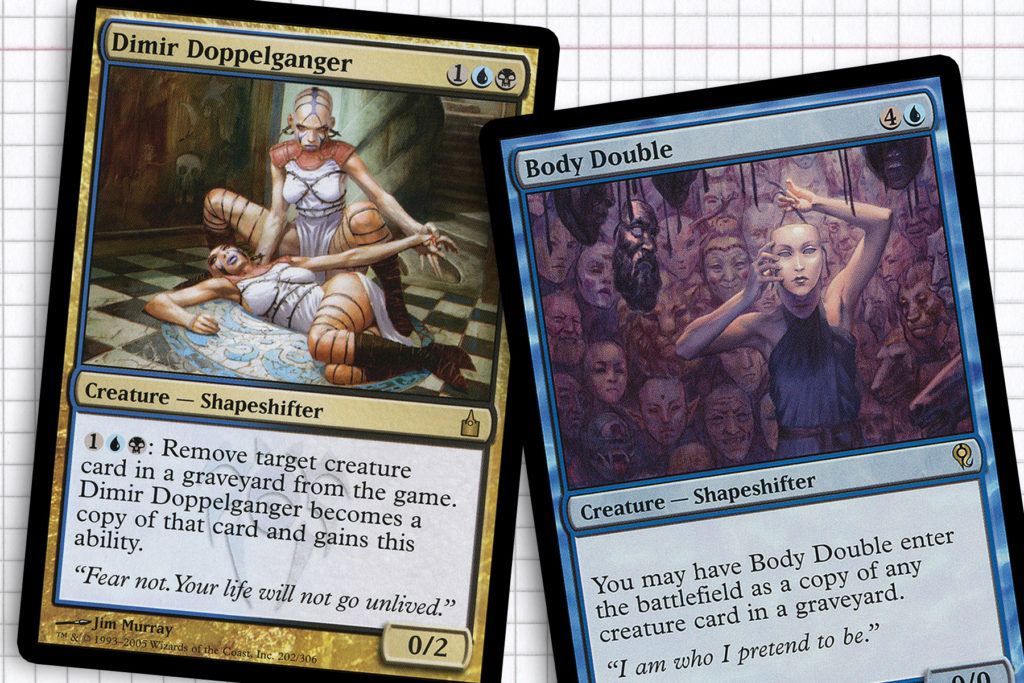
The History of Clones
The creature Clone has been a staple of Magic dating all the way back to the beginning with Alpha. I imagine that the intent was to have a creature similar to the Doppelganger from Dungeons and Dragons, though Vesuvan Doppelganger may have also filled that intent. There would not be another shapeshifter built the same way as Clone for a few years—my research says that the Sixth Edition rules didn’t support enter the battlefield copy effects, which is why we got Morphling in Urza’s Saga—and we had to settle on creatures like Unstable Shapeshifter and Shifty Doppelganger until Seventh Edition.
While Sakashima the Imposter was a notable legendary creature that worked as a clone within the Legendary Rule, it wasn’t until Ravnica: City of Guilds that we got cards worthy of making the cut into our deck in the category of cloning technology with Dimir Doppelganger. Continuing on from there, just about every block, if not multiple times a block, we see Wizards refining their cloning technology. Some of my favorites are Vesuvan Shapeshifter, Body Double, Shapesharer, Phantasmal Image, and Evil Twin. All of these should be included in our outlined deck.
Ultimately, Clone has been completely outclassed and had no place in this deck if built today. Copying spells like Rite of Replication, Fate Infatuation, and Stolen Identity make Clone look silly. And we get much better creatures like Phyrexian Metamorph, Clever Imposter, Gigantoplasm, and this year’s printing of Stunt Double. Sometimes you have to kill your darlings.
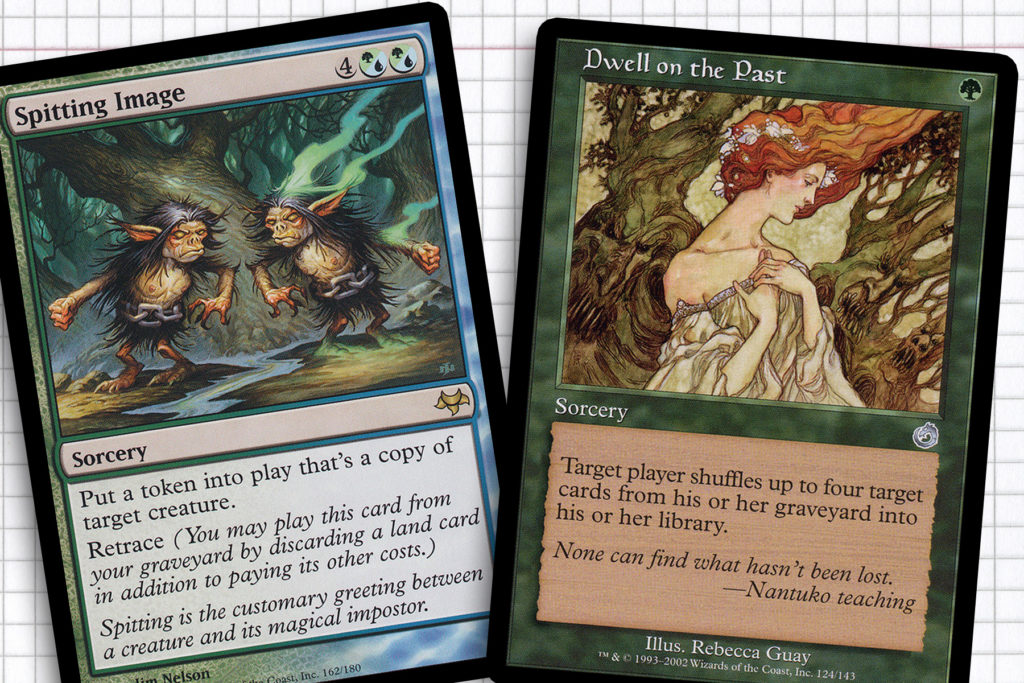
The Sultai Splash
Thus far the deck I have outlined has been almost entirely blue with minor hints of black, so why push our deck into the realm of Sultai? Without access to green we are missing out on two cards I felt were unsung heroes of that casual deck: Spitting Image and Progenitor Mimic. While I don’t value the Mimic as highly, the ability to recover from board wipes but discarding lands to copy Spitting Image out of my graveyard was secretly awesome. Add to the conversation the printing of Altered Ego. While I have not yet cast it, I feel that too helps to make a compelling case for our splash of a third color.
Along with ability to ramp and color fix, access to green also opens us up to a suite of cards that looking back, I wish I had: recyclers. Life from the Loam combos nicely with Spitting Image to keep our hand full of lands if the need arises. Bow of Nylea, Gaea’s Blessing, and Dwell on the Past recycle our creatures and spells back into the deck. Loaming Shaman is just one of my favorite underplayed cards in all of Magic: the Gathering for fighting any number of graveyard interactions while also refreshing our library.
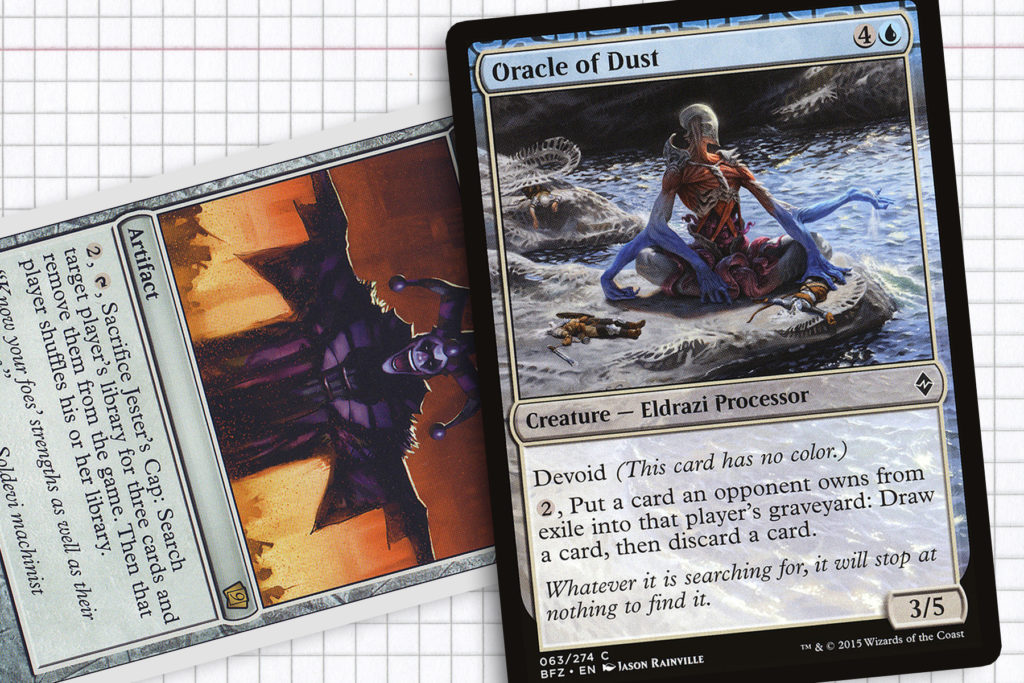
Magic of the Elder Gods
My final big draw in terms of a creature package to The Mimeoplasm comes from an idea I never quite got right: The Eldrazi. I know, I try to plug them in anywhere that won’t fit Samurai or creatures with Shadow, but hear me out. One of my biggest let downs of Oath of the Gatewatch was the complete lack of Processors in the set after their debut in Battle for Zendikar. While thematically I understand that each set was built around a different Eldrazi Titan, I had gotten my hopes up only to be annihilated. Since our general is balanced somewhat by the fact that it can only copy a creature’s form or size once, Processors like Oracle of Dust and Void Attendant allow us to “reset” an opponent’s graveyard if there is a creature that we have exiled with our general or even a creature removed with Jester’s Cap that you’re ready to copy.
Eldrazi also represent a noticeable divergence from other Mimeoplasm decks for me. It is perfectly reasonable to want to fill the deck with giant creatures like It That Betrays, Void Winnower, or even Lord of Extinction if you like your fatties costing colored mana. I would rather stay true to the intended feel of my deck and go towards something more akin to an “aikido deck” by handicap myself to only copying my opponents creatures or using spells like Enslave, Gather Specimens, and Dominate to man my army. Ultimately, my only exception to this rule would be the inclusion of Consuming Aberration, as it can help to fill my opponents’ graveyards with goodies to pluck out with Geth, Lord of the Vault or copy with Body Double.
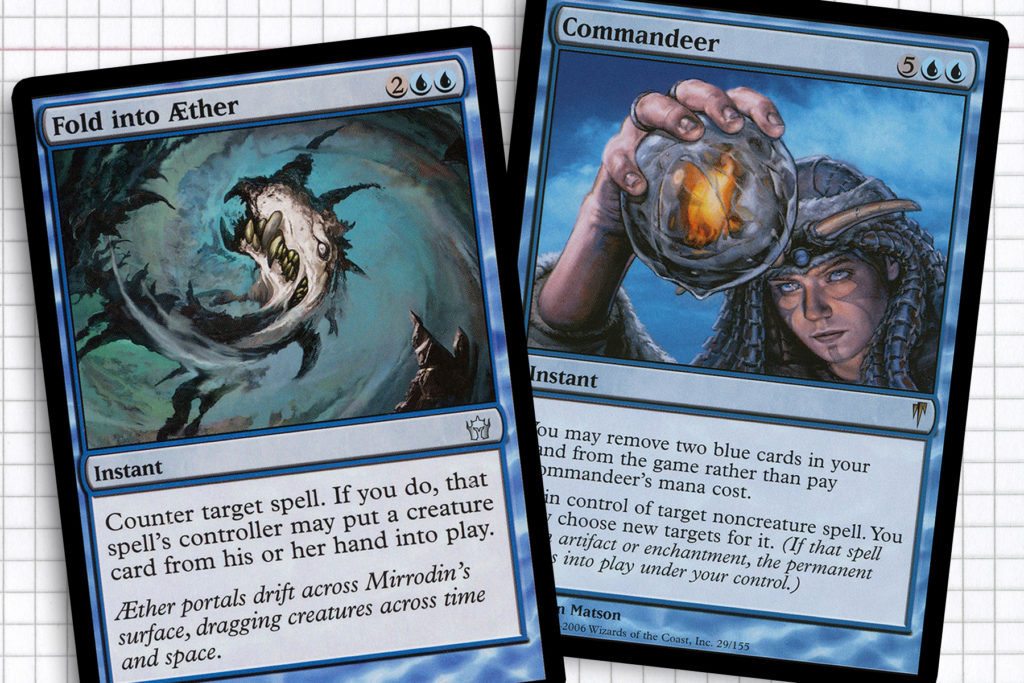
Spellslinging
As I said earlier—while highlighting Jesse’s metagaming or possibly my ineptitude—the original deck had a lack of interaction with my opponent’s spells. One of the advantages we have in a hundred card singleton format is that we need to spread ourselves further to maintain consistency and we ultimately have more deck slots available. I envision using cards like Aethersnatch, Spelljack, Commandeer, or Knowledge Exploitation to have a stronger suite of spell interaction.
While not a central pillar of the deck, I believe politics are an important angle to keep in mind while playing a deck that can feed off everyone at the table. As such, I like the idea of adapting “soft counterspells” for the deck: Arcane Denial, Fold into Aether, Remand, and Dream Fracture all keep spells we don’t want hitting play right away off the table, while also feeding our opponents other options. All so that my opponents aren’t left feeling bad and allowing me to propel through the game under the radar.
So what is the take away here? Hopefully I have brought a new spin to the deck that hasn’t been seen in mass and one that will not raise too many alarms, allowing the pilot to get further into the game. Overall, I don’t know that I’ve seen other Clone archetypes in Commander, so it seems like a niche deck from my perspective. This week’s restrictions were designed to more feed my own sense of nostalgia, but I hope it might have triggered your own nostalgia to port over a deck from your past into Commander. Track me down on Twitter to give your thoughts, I love feedback, it’s a lifeblood of content creation. Until next time, thank you for your time and have a good week.

